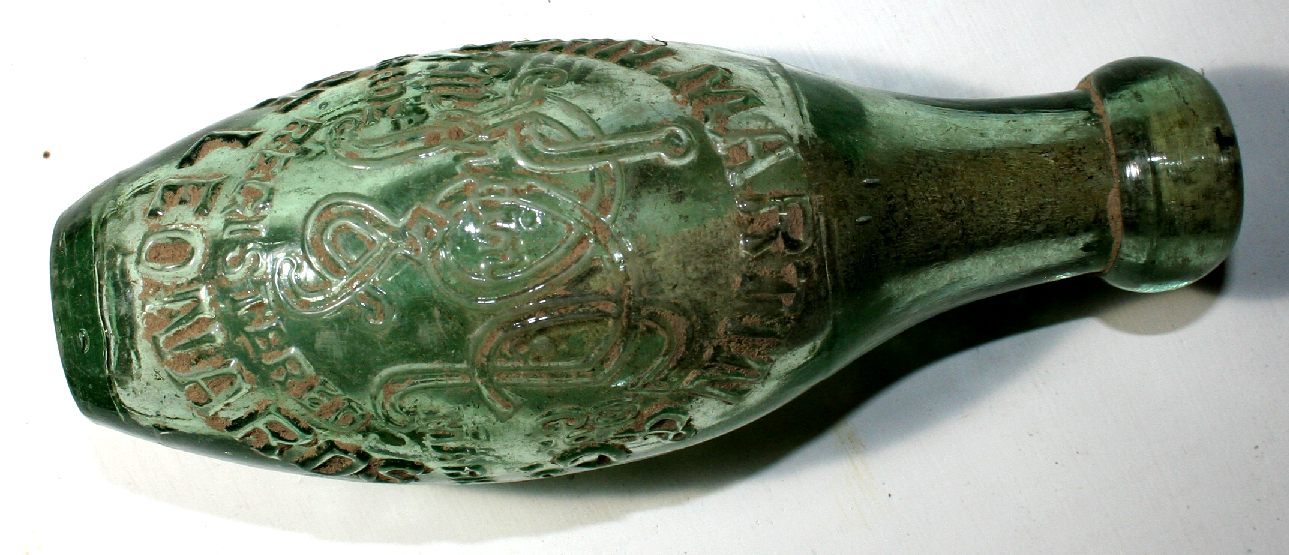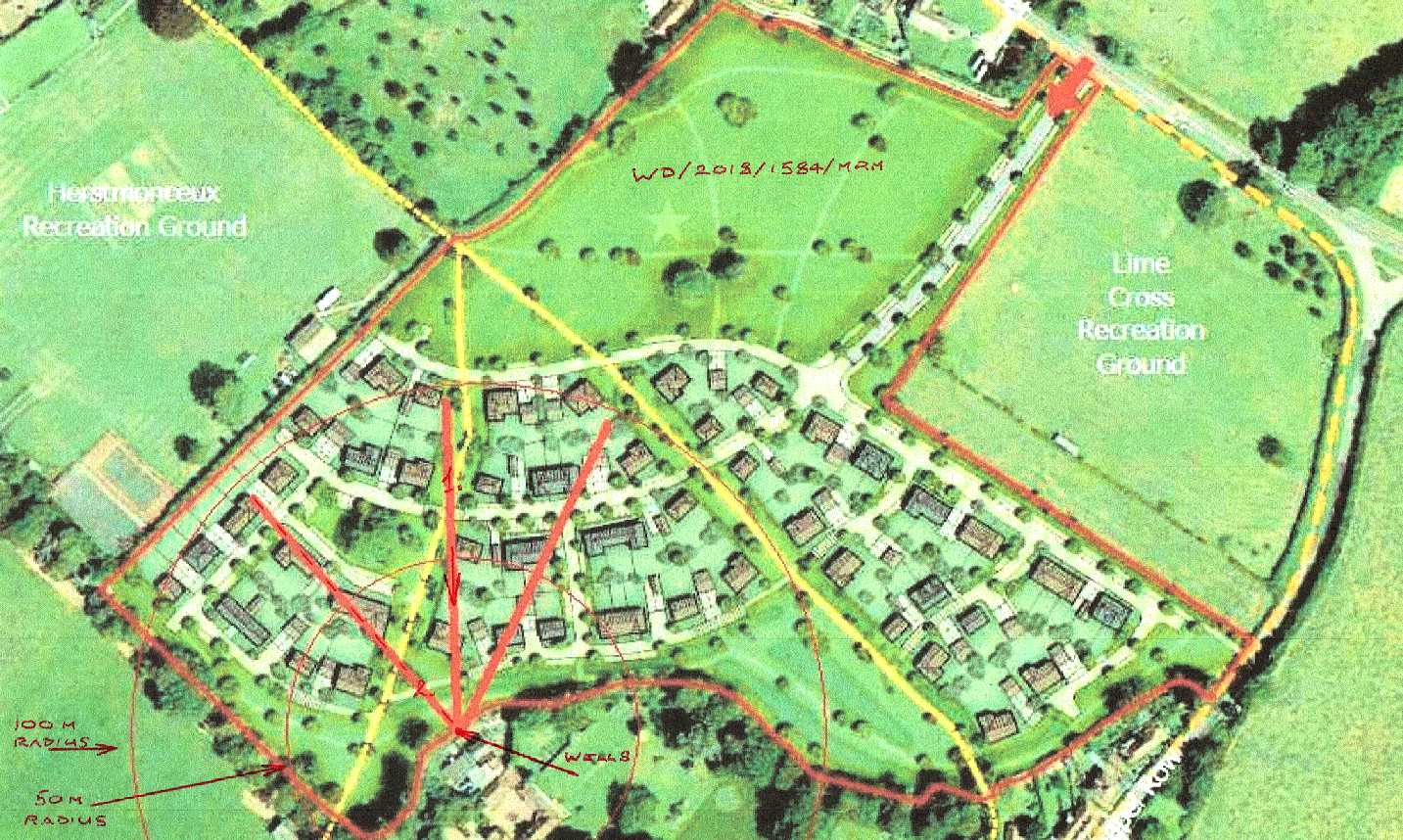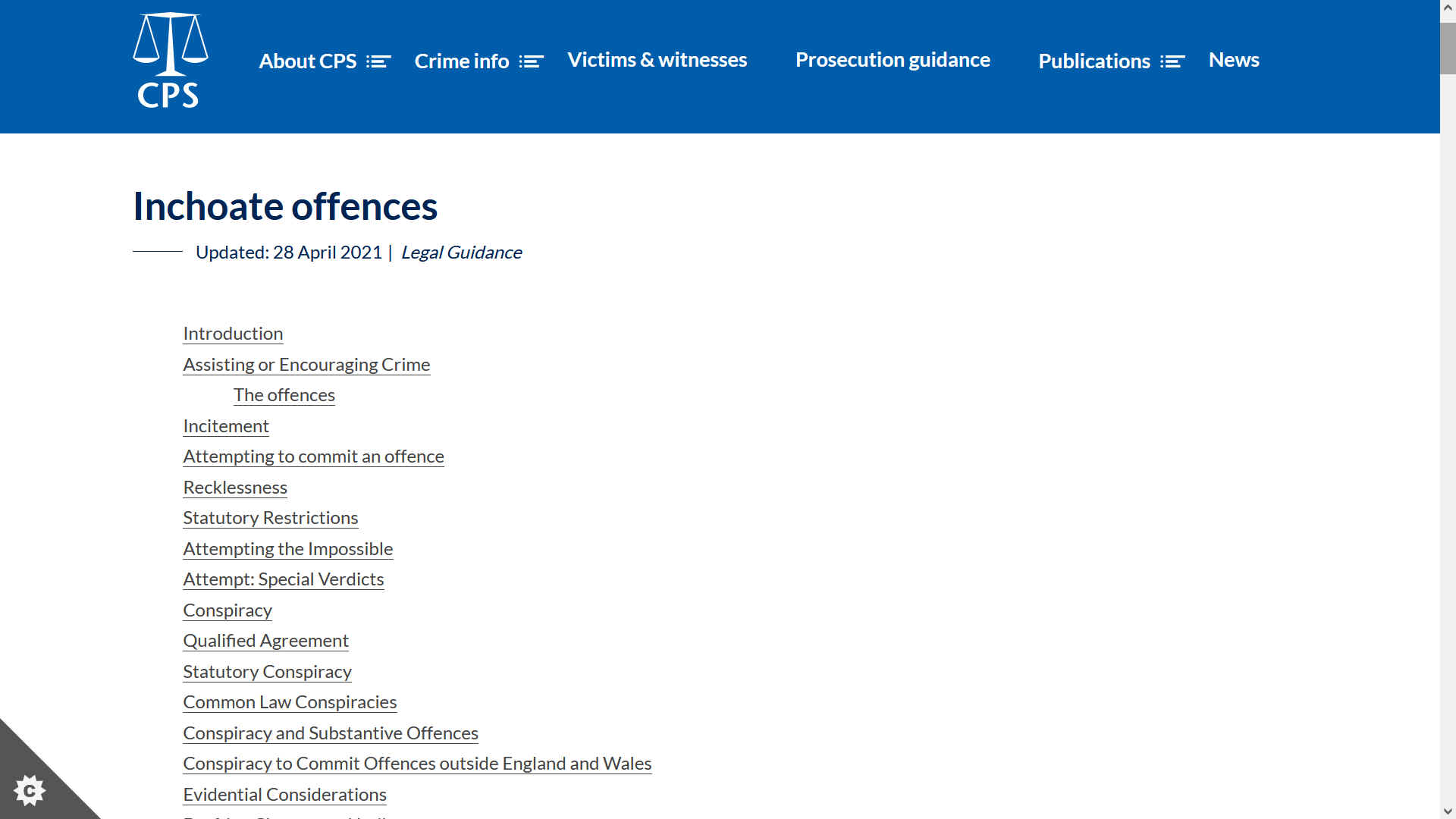|
DUTY TO PROTECT WATER SUPPLIES
Please use our A-Z INDEX to navigate this site or return HOME
|
|
What were Area Plans South planning committee thinking of, or rather not thinking of in passing any planning application on this field, without first ensuring that protections were in place to protect the drinking water supply from this historic well. The chair of the committee was Councillor Susan Stedman.
POISONING WATER SUPPLIES
In the quest to illicit CIL payments to prop up their pension plans, Wealden appear (and it is alleged) to have been criminally negligent, in granting planning consent for 70+ houses in a field near Lime Cross, adjacent to a historic well, that is the only pure water source for a number of concerns within Lime Park, not being fluorinated, but a natural supply. The law is clear as to the duty owed to existing water users, to protect their drinking supplies from threat of contamination. Yet, there is no 106 Agreement as to pesticides and herbicides, or any other form of protection against toxic or carcinogenic contaminants (oil spillages and leaking sumps, gearboxes, etc), in relation to the well that was and remains in operation as a source of highly prized potable water.
Whereas, the proposed development includes garages for cars, drainage for foul and gray water, that could leach into the soil, and gardens, where chemicals from gardening would become an issue, as they soaked into the ground, thence into the groundwater that feeds the ancient well.
That is right, Wealden District Council, appear to have worked with the developers, by way of conspiring to deprive the users of the ancient water supply, in not putting in place a 106 Agreement to protect the ground water from contamination, or threat of contamination. Also, a violation of the (Human) right to peaceful enjoyment of a historic right. A water right, being both a human right and a possession.
WD/2018/1584/MRM - Proofs of evidence. We are sure that facial recognition software might identify these workers at the site where a pumping station was installed, to assist the developers, who had not then (at that time) complied with the 106 Agreement, such as to validify the permission granted by Wealden District Council within the limited timeframe allowed. Nor would that have been possible without the South East's water group, leaping to aid and abet the (future intended) commission of a felony. It is alleged this can only have been to help the developers and the council, to develop the site further, with the building of houses. Hence, there was a conspiracy in the matter. A bit like attempted murder, it is attempted poisoning, a lesser offence, except that conspiracy raised the bar to life imprisonment, in certain cases.
STATUTORY PROTECTIONS
The Statute protecting the purity of a water supply via the long use of a well is not cut and dried, with a dedicated single Act. But, includes the Prescription Act 1832 and Human Rights Act 1998 (peaceful enjoyment of property), and other Statute. See the extracts of the various Law below as examples.
[(3 (2) (h)(i) [biocides and plant protection products.]
WD/2018/1584/MRM - Not so much evidential proof, but an interesting find when excavating around the ancient well.
https://www.bailii.org/ew/cases/EWCA/Civ/1947/1.html
The
Wednesbury
rule, the duty of a local authority to be reasonable. But, only if the housing development encroaches within the 300 meters of reasonable precaution. And, that rules out roughly half the field for
development - at least. With the affordable housing to be built first. Not at all de minimus!
WD/2018/1584/MRM - Proofs of evidence. Proposed plan of the housing development as submitted to the Area Plans South planning committee of Wealden District Council. 50 meter and 100 meter circles are shown on the map in thin red ink. It is submitted that the members and officers could be in no doubt at all, that the proposal would contaminate the ancient well, situated on land adjacent to Lime Park. There were some 35 conditions attaching, not one of which offered or even identified binding protections for the water rights, that they knew about from pictures and written objections from adjacent occupiers, supplied to WDC by recorded postal and hand delivery.
FRAUD
Such failure to protect the water supply, constitutes a financially quantifiable loss, contrary to the duty to safeguard the users of the well from such loss, as per the Fraud Act of 2006. Hence, we are speaking of major corruption, malfeasance, and misconduct in public office. Any such failure constituting the criminal offence of fraud.
We can surmise this, because we know Wealden obtained a legal (barristers) opinion as to the legality of granting the consent. What is not known at this stage, but will become revealed in the course of litigation, or of any criminal prosecutuon, is if WC broached the subject of poisoning the ancient well. The issue here is Procurement Fraud. The act of procuring something of value to another person.
https://www.legislation.gov.uk/ukpga/2006/35/contents
1 Fraud
The above Sections of the Fraud Act appear to support the allegation that Wealden, and/or any other person working with the developers to secure a planning consent in the field adjacent to the ancient well, failed to safeguard the financial interests of those with water rights in the historic well. The cost of a water supply, being quantifiable as charges levied by Southern Water Company, or South East Water Limited.
WD/2018/1584/MRM - Proofs of evidence. Another photograph of the field adjacent to the Ancient Well in line for contamination, showing that Southern or South East Water, did in fact construct a foul water pumping station, to aid and abet the Developers and Wealden District council in the commission of crimes various, offences against the person, and loss, as defined by the Fraud Act of 2006.
VICARIOUS LIABILITY & THE ACCESSORIES AND ABETTORS ACT
It is alleged that Southern Water, working with South East Water, the developers, and Wealden District councillors and officers, actively assisted the crime of poisoning the ancient well, by virtue of carrying out works in the form of a water pumping station, and piping from that water pumping station situation on land to the south-east, fronting onto Chapel Row, thence to the triangle exiting to the A271, and thence to their treatment plant further north.
It is alleged, that in carrying out such works, it was the intention of Southern and South East Water to aid in the procurement of the permission that would enable the 'Developers' to construct houses that would lead to contamination of the Ancient Well, adjacent to Lime Park. Inevitably, affecting the peaceful enjoyment of that water right. In supporting the developers and WDC such, they became party to the offences listed above, as if they had committed the act of poisoning or contaminating the 'Well Water' themselves.
WD/2018/1584/MRM - A more famous case of groundwater poisoning took place at Hinkley, California, where Erin Brokovich uncovered a conspiracy to cover up hexavalent chromium leaks, that had caused widespread cancer symptoms in many of the local residents.
SUSSEX POLICE
In the past, planning crimes similar in nature have been reported to Sussex police, but remain to be investigated. In 1997 a Petition was presented to Wealden, with a Panel set up to look at eleven independent complaints as to serious impropriety and human rights offences, including interfering with family life, discrimination and torture.
Lord Richard Newton referred the complaints to Sussex police, who should properly have recused themselves, and passed to an outside force. As in the case of James Ashley. When Kent and Hampshire constabularies declared Sussex one of the most institutionally corrupt forces in England.
The fact Sussex police have been complicit in covering up reported planning crimes in the past, prohibits their involvement in the investigation and/or prosecution of Inchoate offences.
Deliberate exclusion from proper consideration, by virtue of not compiling a Local List
OFFENCES AGAINST THE PERSON
It is a criminal offence as per the Offences Against The Person Act to threaten to poison, or otherwise contaminate a water supply. Any such conspiracy, constitutes another criminal offence under the Accessories and Abettors Act 1861.
HARASSMENT
It is also a criminal offence to harass any person or persons, where such rights undermine the local authority, leading to attempts to acquire the well. In the past the person fighting to protect the unique heritage item adjacent to the well, has been the subject of a bombardment of planning enforcement actions, all aimed at bankrupting their victim, by way of a vendetta stretching over 40 years, with over 186 recorded enforcement visits. Five planning appeals, and at least three high court actions. Think of the cost to the taxpayer. Estimates are well over £600,000 pounds. Probably nearer the £million pound mark, including borrowing, to make up for these losses.
This is a real live case. A true story, that most people will not believe. Much as with the Post Office Horizon scandal.
It's hardly any wonder that the UK is bankrupt, with councils like Wealden pursuing un-winnable agendas, but with an open cheque book policy, hemorrhaging council tax money at a bleed rate that may well see the council die. As in declare bankruptcy.
Also, there were Magistrates and Crown court actions. It appears, and it is alleged, all aimed at parting their target from any connection with the premises. Newly seen to be a threat to Wealden's control of land development, where their victim in these matters, has won a number of planning cases against what many would agree, is one of the most corrupt councils in England. Indeed, in 2023, several council officers including Mike Wakeford, attended the Hastings Magistrates Court, Bohemia Road, East Sussex, with no other agenda (as it seems) but to evaluate the presentation abilities of their target. Clearly, if that was why four members of staff had been paid (from your taxes) to attend, they would have reported back to Trevor Scott and the Council's Cabinet, including James Partridge (as council leader) that his cognitive abilities appeared unimpaired.
Presumably, that means playing a waiting game; until they are impaired. In which case the 70 house development will be Land banked. Because, Wealden work closely with developers to procure favours, doing all they can to duck inchoate liability. And that may be the key to undoing their vendetta against the former occupier of the old generating station at Herstmonceux. Potentially, time to pay the piper.
WHAT ARE INCHOATE OFFENCES
There are instances where a substantive offence may not have been completed but nevertheless an offence of a different kind has been committed because of the actions or agreements in preparation for the substantive offence. These are known as inchoate offences.
In
this present case, there can be no such limitation. The alleged offence
is one committed by a land development group working with the officers
and members of a council, and a water authority. All aimed at harming
the use of an ancient well, so depriving the users of that well, of that
right.
SYNOPSIS OF THE MOTIVE
In or about 1981/1982, the well in question was re-discovered. It was put into use immediately, as the only water supply to a historic building. Wealden did not want to have to pay grant monies for the restoration of the historic building, not to the then owner. Preferring the premises was in the ownership of other near neighbours in Lime Park, when it would be just a domestic store.
Wealden District Council (WC) knew the building was of historic importance, as noted in a secret closed session Enforcement Report to the Area Plans South Committee from 1983 to 1985. A witness to the discrimination was Mr Chester Hudson, who was granted sight of that Report by accident, immediately furnishing WC with a Statutory Declaration, by way of a sworn witness statement. But this sighting of the Enforcement Report was after many years of WC denying the historic value of the building in several appeals to the Secretary of State. Where WC failed to follow the correct protocols in an officer led conspiracy to defraud the occupier of any beneficial use.
In 1997, WC sought to unlawfully empty the building of fittings and fixtures required to comply with the Health & Safety Regulations, such as toilet and washing facilities. When this failed, they attempted to use the costs generated by the SLAPP action to bankrupt their target.
In 1998 the truth of the historic value of what is a significant heritage asset, was uncovered and verified by the Sussex Industrial Archaeology Society. In June of the same year a further planning application was made by the then occupier, offering WC the chance to correct their maladministration, turned into malfeasance (misconduct in public office). They refused the application stating in open session that they did not want to give consent to "this applicant".
That meeting in June 1988 was recorded by the same Chester Hudson, who was by then very suspicious of WC's motives. Since his own criminal complaint to the Petition and thence to Sussex police was not investigated. Indeed, it transpired that Sussex police had provided blank headed paper for Ian Kay (assistant district planning officer) and presumably other executive officers and the Cabinet at that time, to compose a reply for the police, to exonerate their council of any blame. Thus, the conspiracy deepened and broadened. Tainting any new staff and councillors that came to know of the matter, but then failed to blow the whistle.
WC had already blighted the heritage site with a Tree Preservation Order, that backfired, adding to the inchoate crime element, as a series of SLAPP actions, comprising a course of malicious conduct. Where they knew it was unlawful to seek to protect weed trees in close proximity to a historic building. Their ploy hinged upon the building not being recognised for it true origins.
Then between 2003 and 2006, Trevor Scott and Daniel Goodwin, sought to sweep all WC's past misdeeds under the carpet, with an Agreement by Consent in the Eastbourne County Court. It was agreed that WC would pay to apply for planning permission, using an Independent Report, complied by London University (Archaeology South East). That 'Report' confirming that WC had conspired to deceive at least 3 planning inspectors and another 3 high court judges. In not revealing what they knew about the heritage asset, as confirmed in the 1983-1985 secret reports to committee.
To cap it all, David Phillips, chief enforcement officer, had written to solicitors Butters Olien, acting for Peter and June Townley, to say they were the preferred owners of the historic asset. This letter was contained in the working file belonging to Ian Kay, and officer who (it is alleged) the Inspectorate said should have been replaced.
WC reneged on their Consent Order, looking for other ways to duck the inevitability of discovery of their wrong doing, presumably that key offenders could make off with enhanced pensions, and distance themselves from their crimes.
In 2015 a planning application by Tim Watson, a friend of Susan Stedman of many years, who was now chair of Area Plans South planning committee, was withdrawn and resubmitted in identical terms by a property developer. The occupiers of the historic building objected in strong terms, citing the ancient well as their only water supply. These valid concerns were ignored, much as the history of the heritage asset had been ignored from 1983 onwards, as part of a malicious campaign. The objective being to bury the heritage asset in housing and to poison their water supply. So debasing the asset and giving credence to their efforts to discredit the asset and the former occupier.
That is the motive, as alleged.
SIMILAR FACT EVIDENCE
The case of David Purseglove and Pear Tree Well, a water supply matter is cited as similar fact evidence. His land at Uckfield situated opposite land controlled by WC, as a competitor to their ambitions. SLAPP actions were used to prevent Mr Purseglove from beneficially enjoying his well water.
BLOW THE WHISTLE
Will anyone blow the whistle. Does the new Economic Transparency law have any real bite. We will have to wait and see : )
If you'd care to check the facts with Cllr. Partridge, here are his details:
Mobile: 07415 131002
Be warned, Mr Partridge as the Liberal Democrat leader, has probably been bribed not to reply to any legitimate concerns. If you don't get a reply, you will know that he has been warned off. And, that probably means Wealden are Liable. They will have pulled up the drawbridge, closed their shutters, or in Star Trek terms: "shields up."
And that means they are taking money for not providing a service.
https://www.cps.gov.uk/legal-guidance/inchoate-offences https://www.cps.gov.uk/legal-guidance/inchoate-offences
Please use our A-Z INDEX to navigate this site
|
|
|






